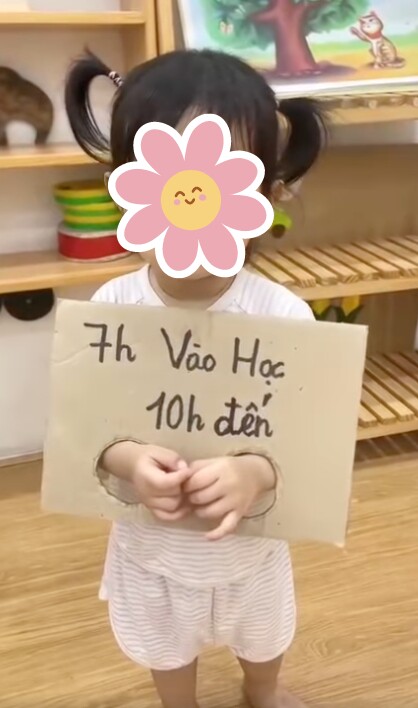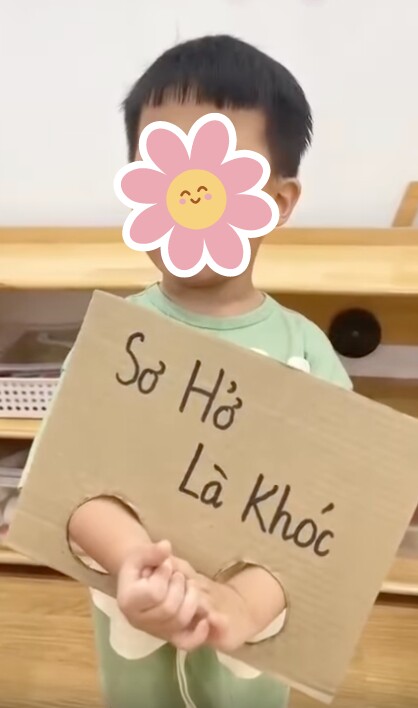With the summer holidays coming to an end and students across the country gradually returning to school, there has been a recent surge of less-than-favorable online discussions surrounding school-related issues. For instance, a story about a preschool teacher who posted a “distasteful” clip went viral on social media.
The video featured students being “handcuffed” at the wrist like ancient prisoners and labeled with various “crimes” such as “class whiner,” “7:30 am entry, 10:00 am attendance,” “slowest eater in class,” “biggest eater in class,” “cries at the slightest provocation,” “class gossip,” and “replies tenfold to every instruction.” This “handcuffing” trend originated on TikTok and gained significant traction, with many teachers and parents participating and posting similar content.





While the trend was initially intended to be lighthearted and fun, many parents found it to be a sensitive and inappropriate joke. As it gained momentum on social media, it became increasingly criticized for its negative impact. The act of teachers photographing and publicly posting such content was deemed counter-educational and condemnable, as it significantly infringed on the privacy of these young students.
Due to their young age and immature understanding, the students became subjects for adults to exploit for views, without considering the potential long-term psychological consequences.
Each child develops at their own pace and has unique strengths and weaknesses. It is the responsibility of educators and parents to help them cultivate their strengths and work on their weaknesses, rather than engaging in futile or even harmful activities like this trend.
Moreover, parents should be aware that as children grow older, they develop a sense of personal freedom and autonomy. They may not appreciate their private images being publicized, especially with negative connotations. Such actions by adults and teachers, though seemingly harmless, can have unintended negative consequences on the children’s future. Therefore, parents should consider the following before posting any images of their children on social media:
– Creating Opportunities for Kidnappers
Parents often share excessive details about their children, including their names, locations, activities, eating habits, schedules, and school information. This sensitive information can be exploited by kidnappers, as young children are vulnerable and easily influenced if approached by someone who knows their personal details. Therefore, it is crucial to protect children’s privacy and personal information.
– Exposure to Malicious Individuals
There are individuals who scour the internet for children’s images to exploit for their gain. In several instances, particularly in Western countries, parents have been horrified to discover their children’s photos on pornographic websites.
– Negative Comments and Criticism
Posting a photo, especially of one’s child, comes with a price. While certain actions may seem normal to parents, outsiders who do not understand the full context may jump to criticisms and negative judgments.
– Impact on the Child’s Future
The information and images shared by parents may include aspects that the child would rather keep private as they grow older. Embarrassing or unflattering photos, such as crying or biting nails, can lead to bullying and teasing from peers.
Additionally, with the rise of social media screening by potential employers, it is crucial to carefully consider what is posted online. In some countries, there are campaigns advocating for children’s rights to remove personal information shared online once they reach a certain age (such as 16) to protect their privacy and avoid potential negative consequences on their careers and personal lives.
“Secure Your Messaging Apps: A Guide to Protecting Your Messenger, Zalo and Telegram Accounts”
“Protecting your data and personal information on popular messaging apps such as Telegram, Zalo, and Messenger is crucial for staying safe online. With sophisticated writing skills, we can empower users, especially women, to take control of their digital privacy and avoid potential risks and threats.”
“Three Signs That It’s Time to Check Out of Your Hotel or Guesthouse”
An industry veteran with 20 years of experience in the hospitality sector advises that upon checking into a hotel room, there are three key things to look out for. If any of these red flags are present, it’s a sign that your stay may be less than satisfactory, and it might be wise to consider alternative accommodations.
What are Smart Speakers? All You Need to Know About Smart Speakers.
What are Smart Speakers? Uncover the Intriguing Features and Operating Principles Behind These Devices.
The world of smart speakers is an ever-evolving realm of technology, offering a seamless blend of audio excellence and intelligent voice assistance. These innovative devices have sparked curiosity among consumers, leaving many intrigued by their capabilities. As you embark on your journey to select the perfect smart speaker, we unravel the mysteries behind their functionality and superior performance, ensuring you make an informed choice.
What is the Purple Crape Myrtle? When do Purple Crape Myrtles Bloom?
The enchanting lavender hues of the Tabebuia chrysantha, or the Golden Trumpet Tree, captivate all who behold it. This exquisite flower, with its delicate beauty, inspires curiosity about its name and blooming season. Uncover the secrets of the Tabebuia chrysantha and explore the magic it weaves during its fleeting appearance.
Should You Keep Your Bedroom Door Open or Closed at Night?
For centuries, the debate has raged on: to open or close the door when sleeping? Some advocate for a closed door, creating a quiet and peaceful environment, while others prefer an open door, allowing a breeze and a sense of spaciousness. This age-old dilemma has perplexed many, but the answer may lie in striking a balance between these two extremes.






































